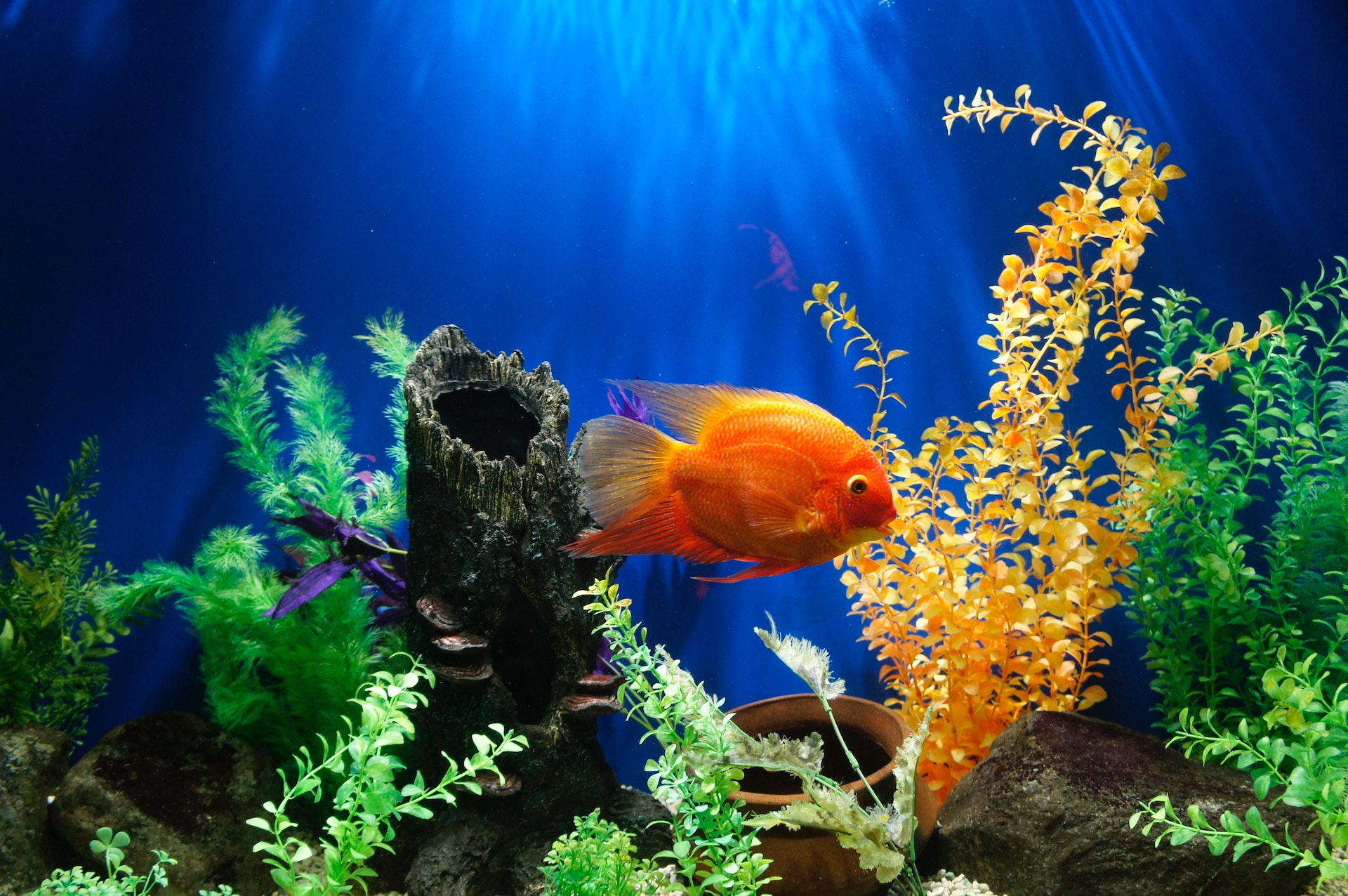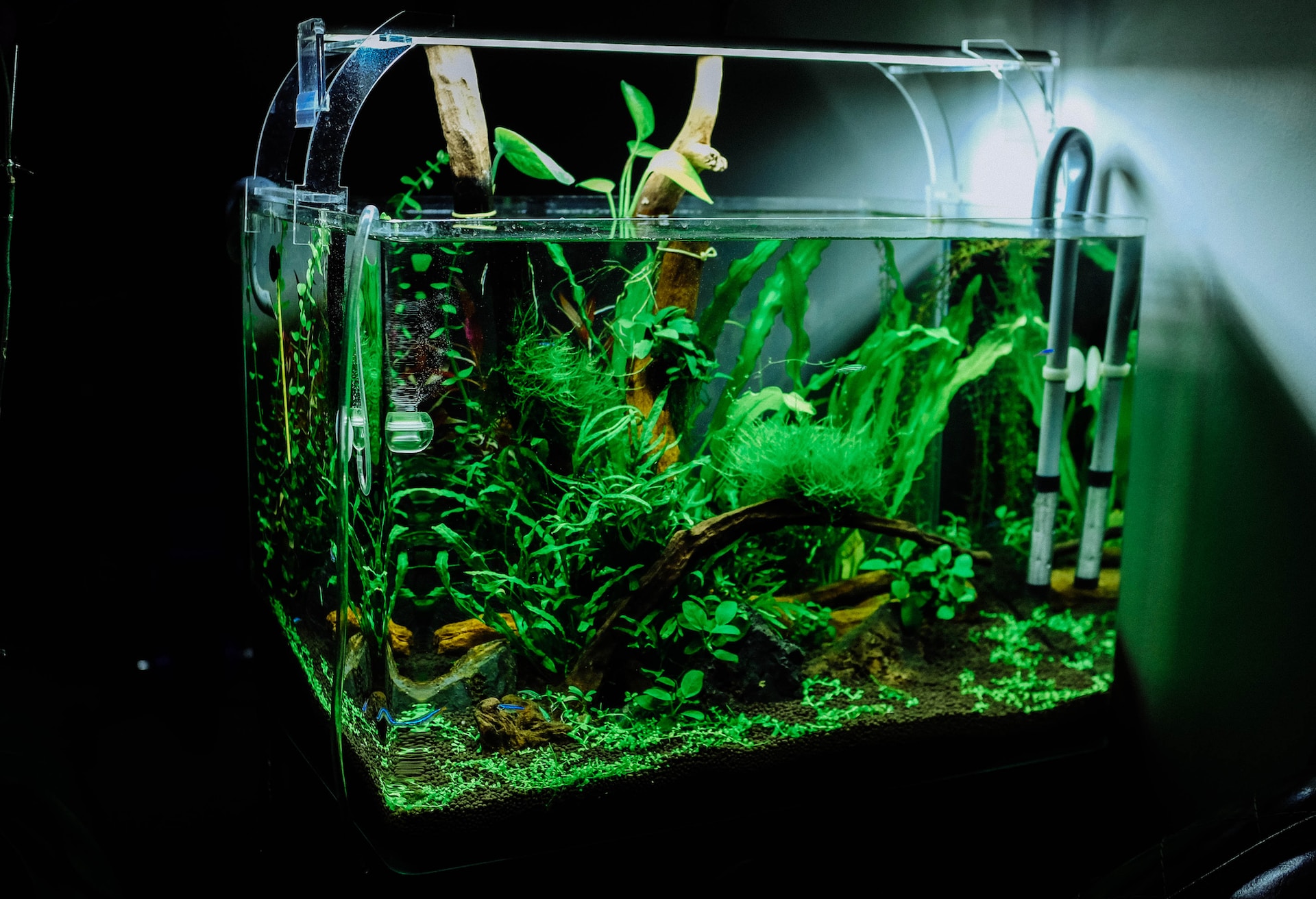Aquarium keeping is an exciting and relaxing hobby, bringing the beauty of nature into our own living space. Aquarium plants play a crucial role in this miniature ecosystem, providing not only a pleasing aesthetic, but also benefits for fish health and aquarium balance. However, choosing and maintaining your aquarium plants can seem complex for beginners.
Choosing the right plants for your aquarium
The first step to ensuring the health and beauty of your aquarium plants is to choose the species that will thrive in your environment. The main factor to consider is the lighting in your aquarium.
Aquarium plants are classified into three categories based on their light requirement: low-light plants, medium-light plants, and high-light plants. To determine the light needs of your plants, consider the wattage of your lamp and the depth of your aquarium. In general, it is best to choose plants suited to medium light, as these species adapt to most conditions.
Additionally, it is important to choose aquarium plants that are adaptable to your aquarium’s water parameters, such as its temperature, pH, and hardness. Research the different species and consult expert recommendations to make the best choices.
Maintenance techniques for healthy plants
Once you have chosen the right plants for your aquarium, it is essential to understand the care techniques necessary to keep them healthy. Here are some practical tips:
- Regular pruning : When aquarium plants grow quickly, they need to be pruned regularly to prevent them from taking over the aquarium and blocking the light needed by other plants and fish.
- Adequate fertilization : Aquarium plants need nutrients to grow. Use a fertilizer specifically designed for aquatic plants. Follow the manufacturer’s instructions and don’t use too much, as this can lead to algae blooms.
- Water quality control : Water quality is a crucial factor for the health of aquarium plants. Make sure water parameters, such as temperature, pH and hardness, are suitable for your plants’ needs. Perform regular water changes to maintain optimal quality.
- The fight against algae : Algae can quickly invade your aquarium and suffocate your plants. To prevent their proliferation, use adequate light, limit exposure to direct sunlight, control fertilization and maintain good water circulation.
Solutions to Common Aquarium Plant Problems
Sometimes, despite our best efforts, aquarium plants can experience problems such as yellowing leaves, slowed growth, or leaves with holes. Here are some common solutions to resolve these issues:
- Nutrient deficiencies : Make sure you provide your plants with all the nutrients they need by using a balanced aquarium plant fertilizer. If you notice specific deficiencies, choose a targeted fertilizer to address them.
- Lighting problems : If your plants are not growing or have yellowing leaves, check your aquarium lighting. Make sure the lamp is powerful enough and is on for an adequate amount of time.
- Diseases and parasites : Aquarium plants are susceptible to diseases and parasites. If you notice signs of deterioration, such as leaf spots or harmful insects, promptly treat your aquarium with specific products to eliminate these problems.

Integrate aquascaping into your aquarium experience
In the aquarium sphere, theaquascaping presents itself as a captivating and enriching avenue to explore. Not only does this broaden your horizons in terms of aquarium design and staging, but it also allows you to create an even more natural and pleasant habitat for your fish and plants.
Aquascaping – a term that merges “aquarium” and “landscaping” – is the art of arranging rocks, aquatic plants and wood aesthetically in an aquarium, creating spectacular underwater landscapes. Although it is an often overlooked aspect of aquarium keeping, venturing into it can bring a new dimension of creativity and fun.
Approaching aquascaping requires some research and preparation. It is essential to choose materials that will not alter water conditions, while providing a safe habitat for fish. For a successful start, opt for plants with low to medium light requirements. These do not require excessive lighting and are often more durable, which is excellent for beginners in this field.
Develop your aquarium with advanced aquascaping techniques is a natural progression in the world of aquarium keeping. As you gain experience, you might consider adding complex features such as underwater waterfalls performed using specialized pumps and fine sand, bringing a dynamic and visually calming touch to your aquarium.
But, before committing to complex creations, take the time to develop a deeper understanding the specific needs of your plants and fish. This will allow you to create an ecosystem that is not only beautiful to look at, but also thriving and healthy.
Successful integration aquascaping in your aquarium can transform your aquarium experience. This gives you the opportunity to see your plants and fish in a new light, in a habitat that is as functional as it is stunning. The most important thing is to maintain a balance, ensuring that each element of the aquascape contributes to a stable and balanced ecosystem, conducive to the well-being of its inhabitants.
The therapeutic benefits of aquarium keeping
In today’s fast-paced world, aquarium keeping is emerging not only as a rewarding hobby, but also as a deep source of serenity and mental well-being. In this section, let’s address the therapeutic aspect of aquarium keeping, highlighting how this delicate art can serve as a breath of fresh air in our often overloaded lives.
Careful observation of the slow, graceful movements of fish, combined with contemplation of the organic growth of plants, can offer a moment of calm and meditation in our daily lives. This process, often referred to as “aquarium therapy,” has demonstrated beneficial effects on stress and anxiety. In fact, several studies have shown that spending time observing an aquarium can significantly reduce stress and lower blood pressure.
But the well-being provided by aquarium keeping does not stop at simple observation. The process of care and maintenance of the aquarium, although thorough, is in itself a therapeutic activity. It invites patience and attention to detail, cultivating a sense of responsibility and pride when seeing its aquatic ecosystem flourish.
Involving children in aquarium keeping: environmental education
Aquarium keeping also presents a wonderful opportunity to educate younger generations about aquatic ecosystems and environmental conservation. Introducing children to aquariums gives them the means to develop a deep appreciation for nature and an understanding of the life cycles of aquatic organisms.
This creates a fertile ground for enriching discussions on current environmental challenges, such as water pollution and the preservation of natural habitats. Additionally, it can sow the seeds of an interest in the biological sciences, perhaps stimulating a passion for future study and careers in this field.
To go further: Explore aquarium communities
Once you are well established in the world of aquarium keeping, it can be enriching to explore communities of enthusiasts who share your interests. Online or locally, these groups can be a valuable source of information, advice and support. Connecting with other aquarists can not only expand your knowledge, but also provide a platform to share your own experiences and successes.
Engaging in discussions about the latest trends in aquascaping, sharing tips on how best to care for aquatic plants, or simply admiring the accomplishments of others, can all add an extra layer of depth and enrichment to your experience. aquarium.













